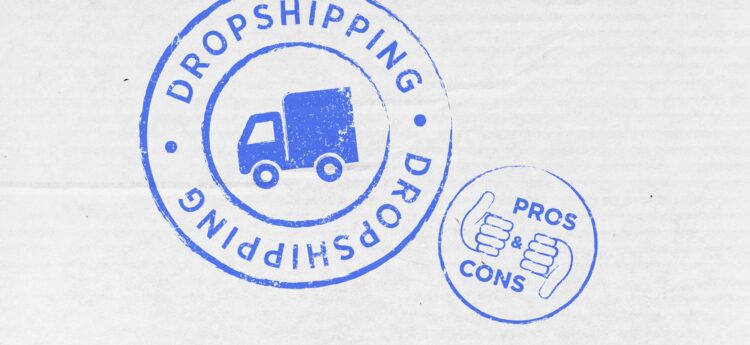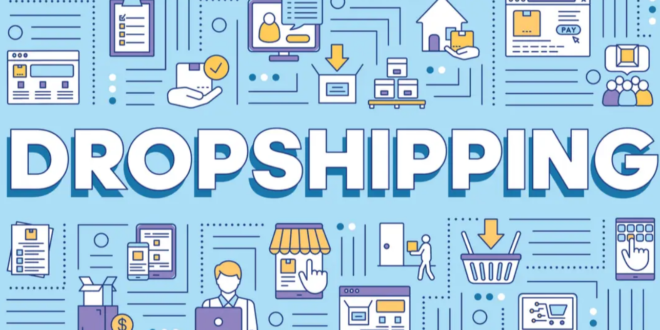Dropshipping is the latest trend in online retailing. The system promises simple processing of orders in e-commerce, lower costs and a sensible allocation of resources. The online retailer can concentrate solely on his website and marketing – meanwhile, the dropshipping partner takes care of warehousing, packaging and shipping.
Especially in textile e-commerce dropshipping is really popular. In this branch, anyone can easily order clothes from a dropshipping partner who specializes in clothing, like Paniho Shirts, which are printed and shipped. The retailer only needs to design T-shirts and do marketing.
But is dropshipping really that easy? What do you need to know? What are the legal pitfalls and how does dropshipping work?
How does Dropshipping work?

Until now, e-commerce was mostly a matter between an online merchant and a customer. But there are more and more small online shops that cannot or don’t want to afford their own warehouse.
This is where the logistics industry has discovered a gap in the market from which all parties involved can benefit. The cycle of online trade has expanded by one player. Online traders no longer have to take over the packaging and shipping of the goods themselves.
The retailer is responsible for ensuring that the online shop is attractively designed and well-advertised. When a customer orders a product from the online shop, the order goes directly from the retailer to the dropshipping partner, who packages and ships the goods. The dealer doesn’t need to worry about shipping whatsoever. He just has to make sure that there are enough goods in the Dropshipping partner’s warehouse to ensure that the goods can be shipped quickly.
An even simpler variant is, if the online retailer from which the customer orders is itself only a middleman and forwards the orders directly to a wholesaler or even the manufacturer itself.
What are the advantages of dropshipping?

The advantages of the Dropshipping model are obvious. Especially small e-commerce players or Start-Ups can really exploit the benefits of Dropshipping. They need significantly less start-up capital due to the cost savings of Dropshipping.
The retailer does not have to invest in a warehouse and, when cooperating with a wholesaler or manufacturer, does not have to purchase goods without knowing whether he will find buyers at all. He can concentrate entirely on optimizing the online shop, marketing and working on the reach of his website. All orders go automatically to the Dropshipping Partner.
The Dropshipping model also has advantages for established or larger e-commerce companies. The merchant needn’t worry about surplus products and can simply use the low initial costs for new products to test them almost risk-free. There are a few courier services like Ship Expert that’s collaborating with some of the world’s largest airlines to deliver your packages all over the globe at the lowest possible rates.
What are the disadvantages of the Dropshipping system?

Of course, the Dropshipping system has its disadvantages. The retailer has little to no influence on customer satisfaction due to packaging and shipping. On top of that, Dropshipping reduces the online retails profit margin.
Because the Dropshipping partner also needs to profit from his service, Dropshipping usually costs more than supporting their own storage and shipping would cost.
Careful calculation is necessary.
How expensive is the Dropshipping offer from a serious and trustworthy partner? How expensive would the storage space be? Is it even possible to take over the workload of packaging and shipping yourself? The calculation is difficult here because of how much time really needs to be invested in packaging and shipping depends heavily on experience.
The second major problem with Dropshipping is, that as a retailer, you have little to no influence on packaging and shipping. You entrust this work completed to a service provider and depend on his good and proper work.
If the goods are not packed properly and arrive damaged at the customer’s premises, the retailer can’t help it – after all, the work is done by a service provider. Nevertheless, you are solely responsible that the goods arrive undamaged and quickly at the customer.
Legal aspects of dropshipping

Under data and consumer protection laws aspects, there are some things to be considered when it comes to Dropshipping.
The problem with Dropshipping compared to conventional e-commerce, is that the online merchant not only processes the customer’s personal data himself but also passes it on to a third party, namely the dropshipping partner. This third party needs personal data such as name and address for shipping.
The new European data protection laws set strict requirements as to when personal data may be passed on at all. There are two different ways in which data can be transferred without legal problems.
Either the merchant concludes an order data processing agreement with its service provider in accordance with the General Data Protection Regulation (GDPR) of the EU (by which every merchant working together with citizens of the European Union needs to adhere). Through this, the Dropshipping partner becomes a sort of “department” of the merchant and thus legally no data transfer to a third party takes place.
The other possibility is data transfer. If the data transfer is necessary for the fulfillment of an order, the data may also be transferred to a third party. In this case, however, the online retailer should expressly refer to this data processing in its data protection declaration (that is also mandatory by GDPR).
Consumer protection and dropshipping

If the goods are returned, either because they arrived damaged at the customer or because the customer uses his right of return within 14 days, the goods always arrive at the online retailer, not at the Dropshipping partner. The goods are always returned to the address of the retailer – because the Dropshipping partner is not visible to the customer.
This means that the retailer receives annoying returns that he has to deal with – even though he wanted to outsource the shipping to a service provider.
How does Dropshipping work properly? The best tips from the experts

Many companies successfully operate with this system despite the disadvantages of Dropshipping. They point out the typical errors that can occur during Dropshipping.
A major error is a lack of reference to the goods sold. If you do not see them physically in front of you, or if you use the possibility of Dropshipping and sell an incredible amount of goods, you may not even be sufficiently informed yourself to be able to offer customers the best possible advice on your products.
Another mistake is that the technical infrastructure behind the Dropshipping system can easily be underestimated. You can work with this system from anywhere where you only have an Internet connection – but this Internet connection must always be stable. The server must be able to offer a lot of computing power to be able to handle the many tasks caused by the orders and their transfer. The processes behind a dropshipping system must be optimized again and again.
The biggest mistake is usually that the costs of dropshipping are not calculated correctly. Dropshipping always reduces the margin. Although this is part of the system, the costs are often underestimated in the calculation, which can put the profitability of the whole project into question.
 Hi Boox Popular Magazine 2024
Hi Boox Popular Magazine 2024



